Artist Tips: Massimiliano Pagliara
How to set the parameters for successful music making.
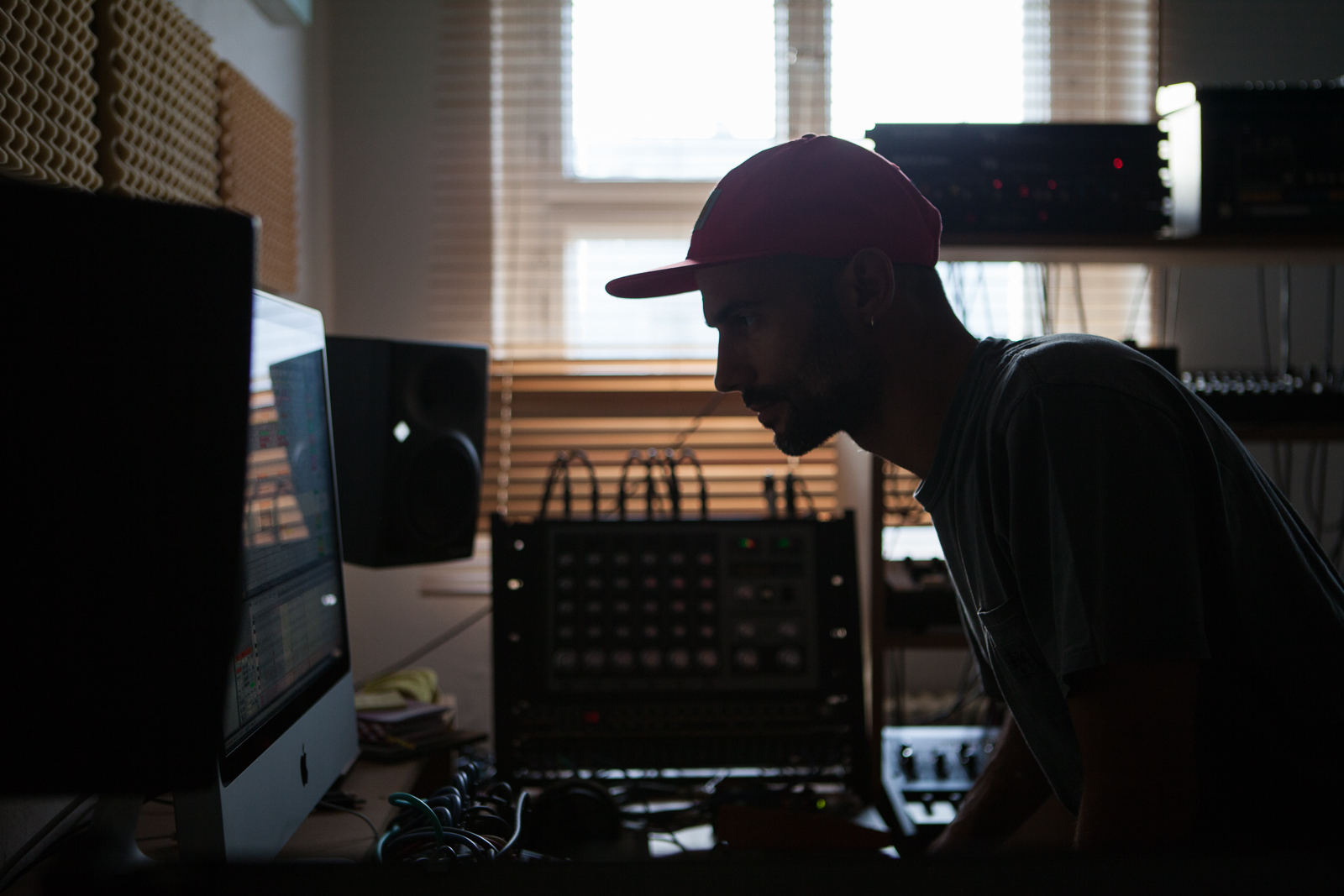
Artist Tips: Massimiliano Pagliara
How to set the parameters for successful music making.
Massimiliano Pagliara was born in Tricase (Lecce) in the deep south of Italy. Already as a child he listened to diverse types of music: rap, classical, reggae, dub, and ’60s rock & roll. Coming from this small village, he and his friends created a small musical world for themselves, spending a lot of time each day playing records in his basement and at private parties.
Upon moving to Milan in 1997, Pagliara—commonly known as Massi— embarked on an academic career and eventually earned his diploma in theatre, dance, and choreography at the Civica Scuola di Teatro Paolo Grassi in 2001. While discovering the fashionable and alternative club scene of the city, his imagination was captured by experimental electronic music such as Aphex Twin, Boards Of Canada, Autechre, and Mira Calix. It was only natural that these avant-garde sounds found their way into Massi’s original body of production work.
After finishing school, Massi ventured to Berlin where he continued his studies in contemporary dance, but also dived into the city’s explosive techno nightlife. His interest in electronic music found its peak in 2003 when he finally began to pursue DJing; he’s been spinning records ever since and has secured a residency at Berghain/Panorama Bar, the place where it all started.
As a producer, Massi’s album debut, Focus For Infinity, arrived in 2011 via Live At Robert Johnson, followed by his sophomore LP, With One Another, in 2014. He debuted on the Berghain-affiliated Ostgut Ton with the Time And Again EP, and continues sharing a stream of EPs, remixes, and singles that encompass eclectic mix of house, disco, electro, and techno. Most recently, he released his third full-length solo album, Feel Live, and started a new label, Funnuvojere, with a four-track EP by Mancunian James Booth.
Not all artists can maintain such quality with such quantity, but Massi does it with aplomb. To learn more about the secrets behind it, we dialled him in to learn more about his processes. He decided to talk about Setting the parameters for successful music making.
Warm up your Body and Mind
I have learned with time that listening carefully to myself in the special early hours of the day is much better/healthier than getting overwhelmed by social media and outside-world information. When you first open your eyes, you shouldn’t look at your phone as the very first thing you do (Tip: keep your phone as far as possible from the bed and/or turn it off at night). Checking messages, emails, and notifications adds so much to your freshly awoken mind that might actually be dangerous and could have a bad impact on the rest of your day. Give yourself some time and start to find—and eventually set—your own focus. This is key for a successful and productive day in the studio.
As a former dancer, I am used to getting up early and exercising. I’ve always been an early bird, but definitely through those intense years of training, while at my dance school, this became even more accentuated. This is something that I still do, and it comes naturally to me. I love getting up early and I do love those early hours in the morning, when everything feels quiet and you start gradually moving into the new day. My body and my soul are particularly sensitive and receptive at this time, so I try to be very careful with things as to not overload myself too much before I have even put my feet on the ground.
After some breakfast, if the weather is nice, try to workout outdoors. The combination of light, fresh air, and movement activates your brain and body and allows you to feel new energies and strength. If the weather isn’t nice, workout at home—it’s the movement that’s most important. I feel stronger and at the same time more relaxed; I make space in my head, and this helps me to make music.
Warm Up Your Ears
After I complete my morning rituals and preparations for the day, I like to listen to some music that, to me, feels like a nice ear-massage or a warm cuddle. Brian Eno and Laaraji are two good examples for this kind of moment, as well as some minimalist gurus such as Philip Glass, Steve Reich (Music for 18 Musicians has been my most used morning meditation soundtrack), and Terry Riley. All of this will help you find a nice calm, balance, and focus, which you can then bring with you into the studio.
Choose the Right Environment
My studio is located in the same place where I also live, in Berlin. I feel very lucky as to have been able to do that for so many years now—it’s been that way since I started with music production, back in 2006. I can have my studio at home, make some noise, be super cozy, even in my pyjamas, and my neighbours are cool with it. My entire discography has been made in this same building for the past 13 years, and I have only moved once, within the same building, same floor, just into a bigger apartment.
Some people need to leave the house and go to their “office” to work, and they can actually only work if they do so, which is totally understandable. But music is such an intimate and personal experience, and so for me, being able to do this in the same space where I also live, feels just right and amazing. The living and working always go together. I sometimes wonder if my music would sound different if I went to a proper music studio/office. Find where you feel comfortable and stick to it.
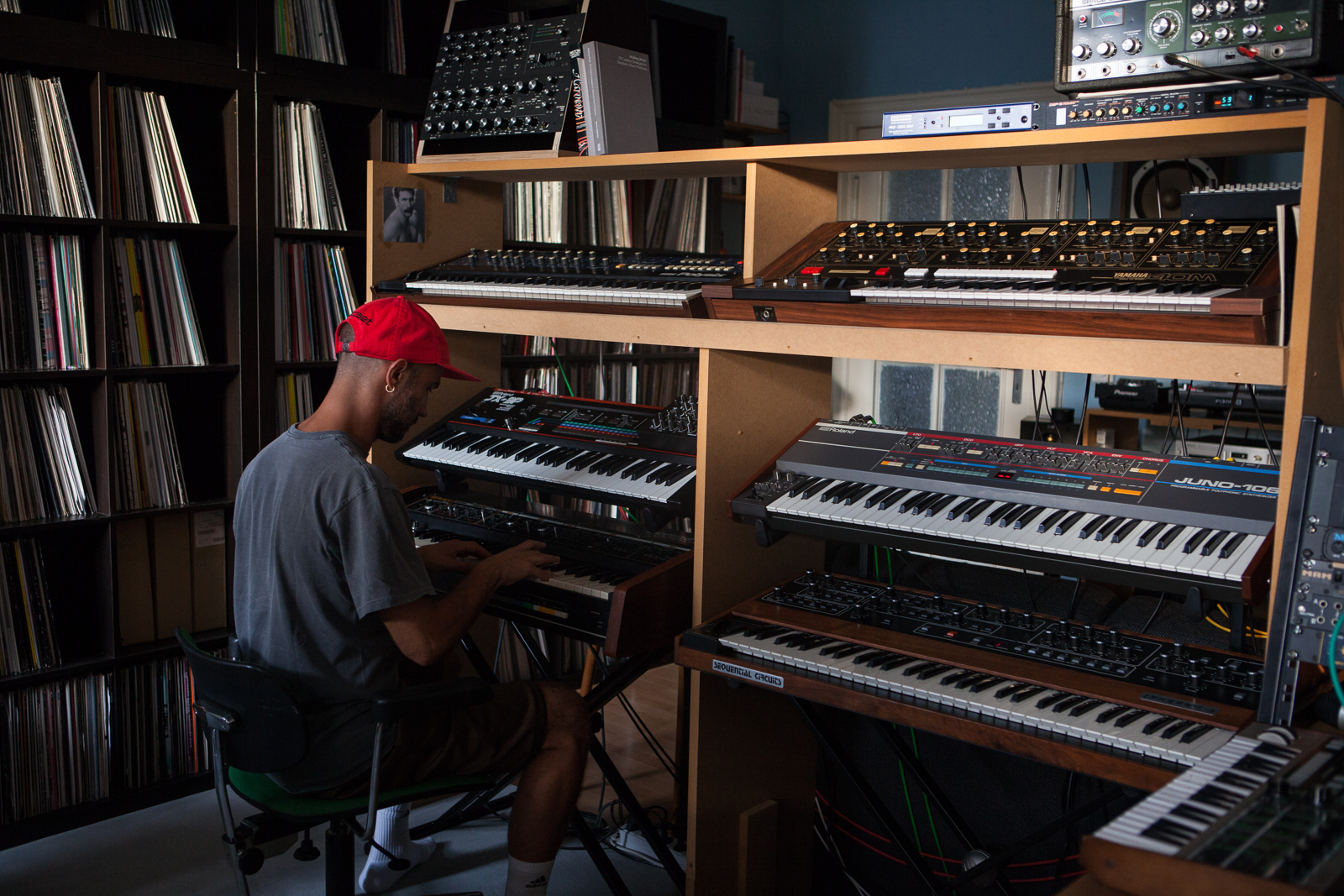
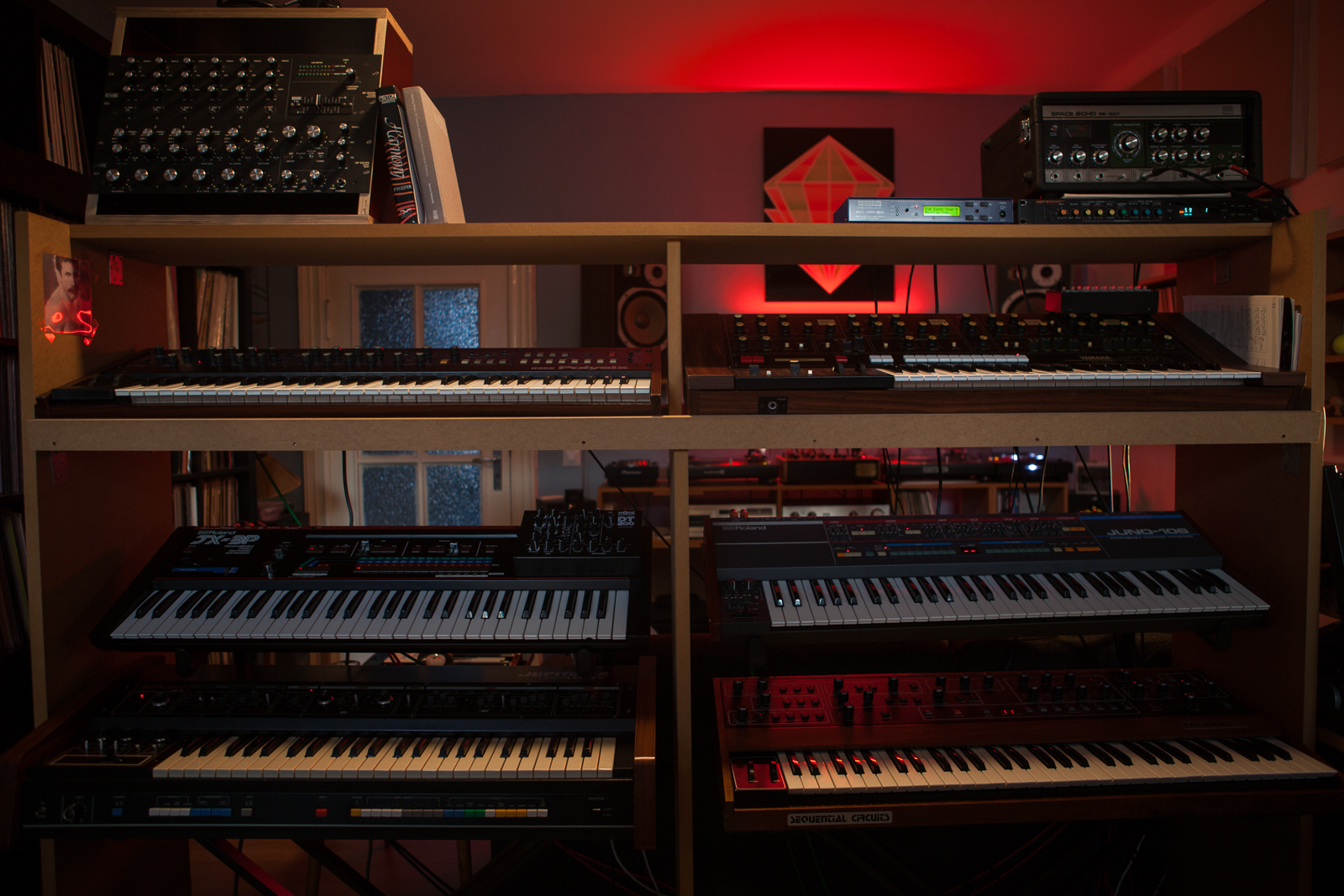
Use Movement to Inspire Musical Ideas
I’ve always preferred working with machines and hardware because of the tactile experience which is connected to it. I think this comes from when I was a dancer: my body was the instrument which I had to learn how to use first and then be able to move in a space to a certain kind of rhythm or timing, and repeat certain choreographed movements or patterns. This same kind of physical and tactile experience is something which I can relate to my passion for making music. I need to have real and simple things which I can touch or play, that help me create new musical ideas. I need to feel and do things through my body. This is different from person to person, and something that you should keep in mind.
Learn to Use Your Chosen Tools
I’ve had to take some time to learn each of my instruments. I am quite methodical, so I downloaded all the manuals, printed them out and always had them by my side. I also watched many tutorials on Youtube (so much respect and gratitude for everyone who took the time to demonstrate how to use certain machines online. Thank you!)
And I still do that from time to time, but this is what so many people forget. I feel like it’s important to refresh your mind about certain features that each machine has and that makes it special. Actually whenever I start reading manuals again, I feel inspired and more confident and suddenly some new cool stuff happens again. Never stop learning, and making the effort to learn.
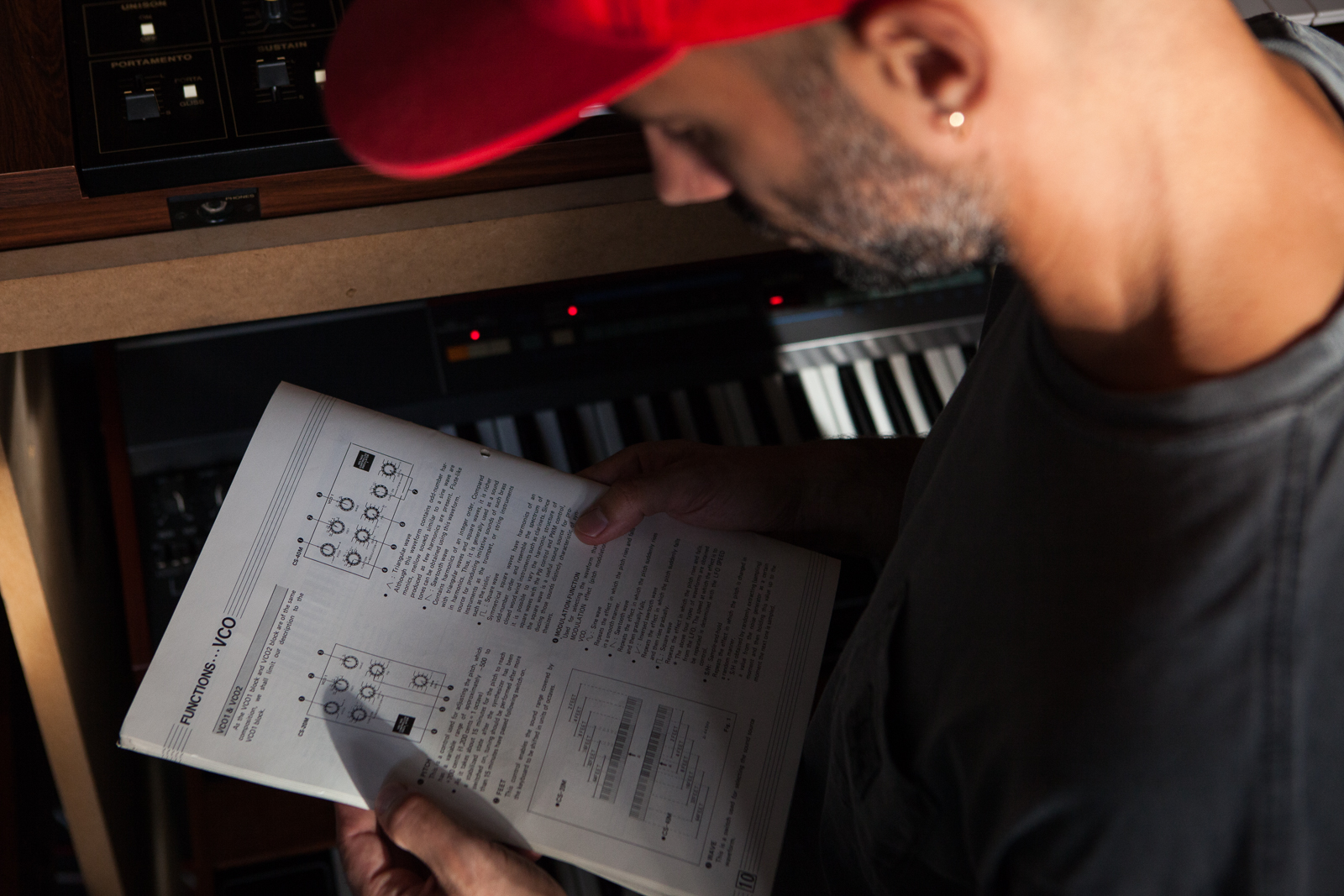
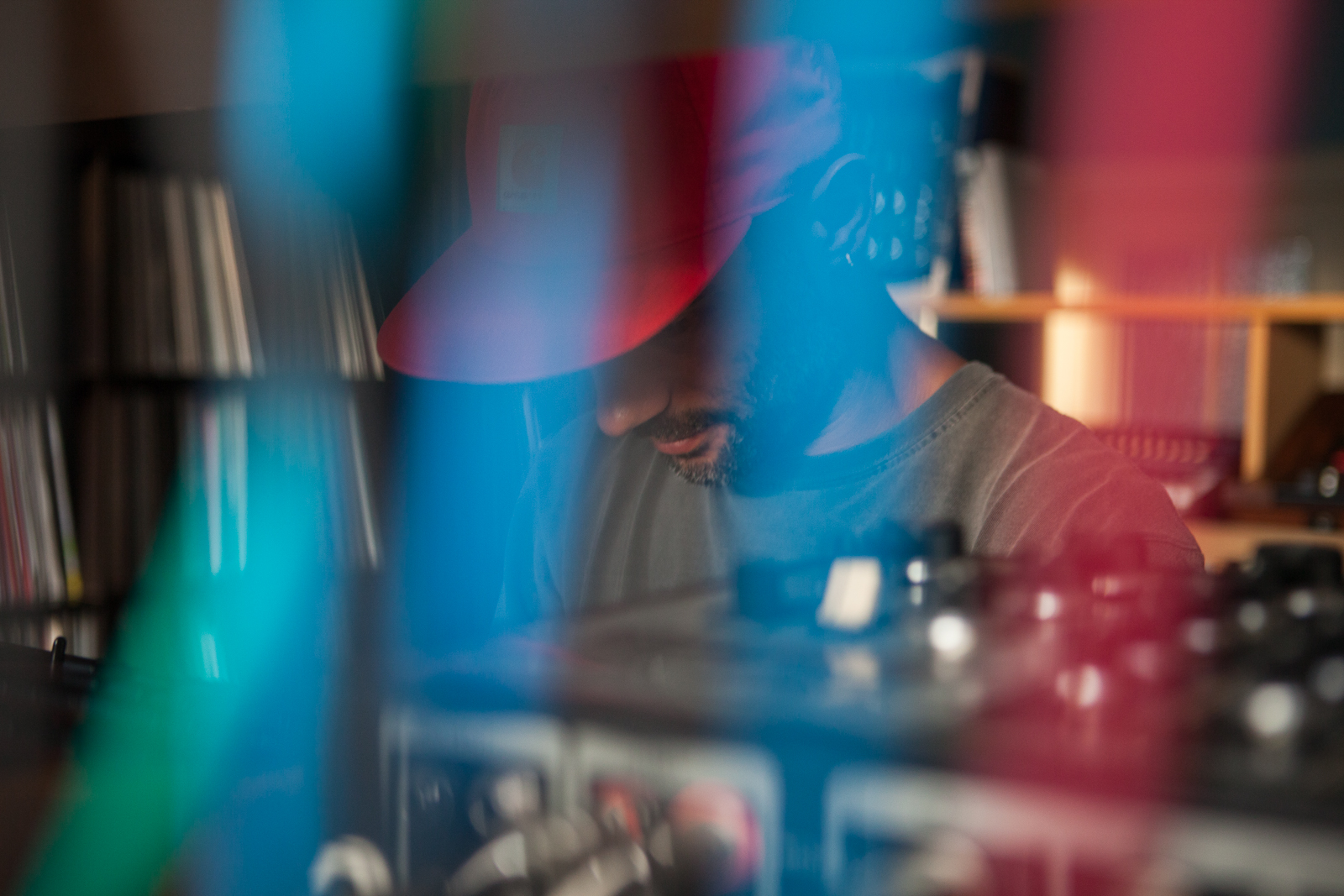
Always Finish What You Start
The beginning of my learning process was a very exciting time, very experimental and I still remember those first jam sessions, where I basically learned new things just from doing. Sometimes this would not make that much sense and I would feel somewhat frustrated and lost, but I think the secret here is to keep going and especially finish each track you’ve started working on. Even if in the end you are not going to use it, you should always try and complete each track you make, as if you are going to release it, because you will learn a lot along the way. I still finish everything that I start. Always. It doesn’t matter if this takes one day or one week or one month. I have to finish each track/song I do. That’s for me the real job and accomplishment.
Learn the Fundamentals of Music
It’s important to be patient and to spend time learning. One thing that really helped me a lot was taking piano lessons from another friend, Alessandro Tartari. I needed to start from the very beginning as I had literally never played a keyboard before. I had no idea about harmony, tonality, chords, key changes, and all of those things. My parents really wanted me to play the piano when I was a child but I always wanted to be a dancer. We never came to an agreement and so I ended up doing neither. Sometimes I regret not listening to my parents and I wonder if I would have been able to play Satie, Chopin, and lots of other complex stuff by now. But it’s never good to force anything and it’s also never too late to start something new. I started music production when I was 28, and even though I can’t play Chopin or Satie, I now understand one of the most essential things about music, which is harmony and this allows me to express myself via sound.
Learning chord progressions and the theory of which notes go well together has definitely opened many new doors, and I finally understand what is going on in a lot of the dance music that has deeply inspired me, such as disco, italo, and Chicago house. Often it’s just a basic chord progression, going from the root note to a third and then to a fifth, or something along those lines. A simple trick like a key change, can bring some tension and excitement into a song/track and takes the arrangement to another dimension.
I did this a lot in the beginning. My first EPs, like Transmissions Florales on Balihu Records (my very first vinyl release in 2008) and Sensation 9, released by Rush Hour in 2009, are much about key changes. I was putting what I was learning at the time into action.
Don’t Be Afraid to Ask Your Friends
Sometimes the help you need is right in front of you. When I first started producing, I didn’t really have a clue about anything. I hardly knew what an analogue synth was and what you could do with it. Fortunately, I have some wonderful friends in Berlin who showed me things, such as Daniel Wang who taught me about analogue synths and subtractive synthesis, Jules Etienne who introduced me to the world of DAWs—most specifically Ableton Live—and my other dear friend Snax who showed me some great stuff about chords and soloing.
You can always learn from your friends. People are there to help. If you don’t know something, ask questions; you’ll be able to pick up things far more quickly with some support and advice. (And don’t forget to help others too!)
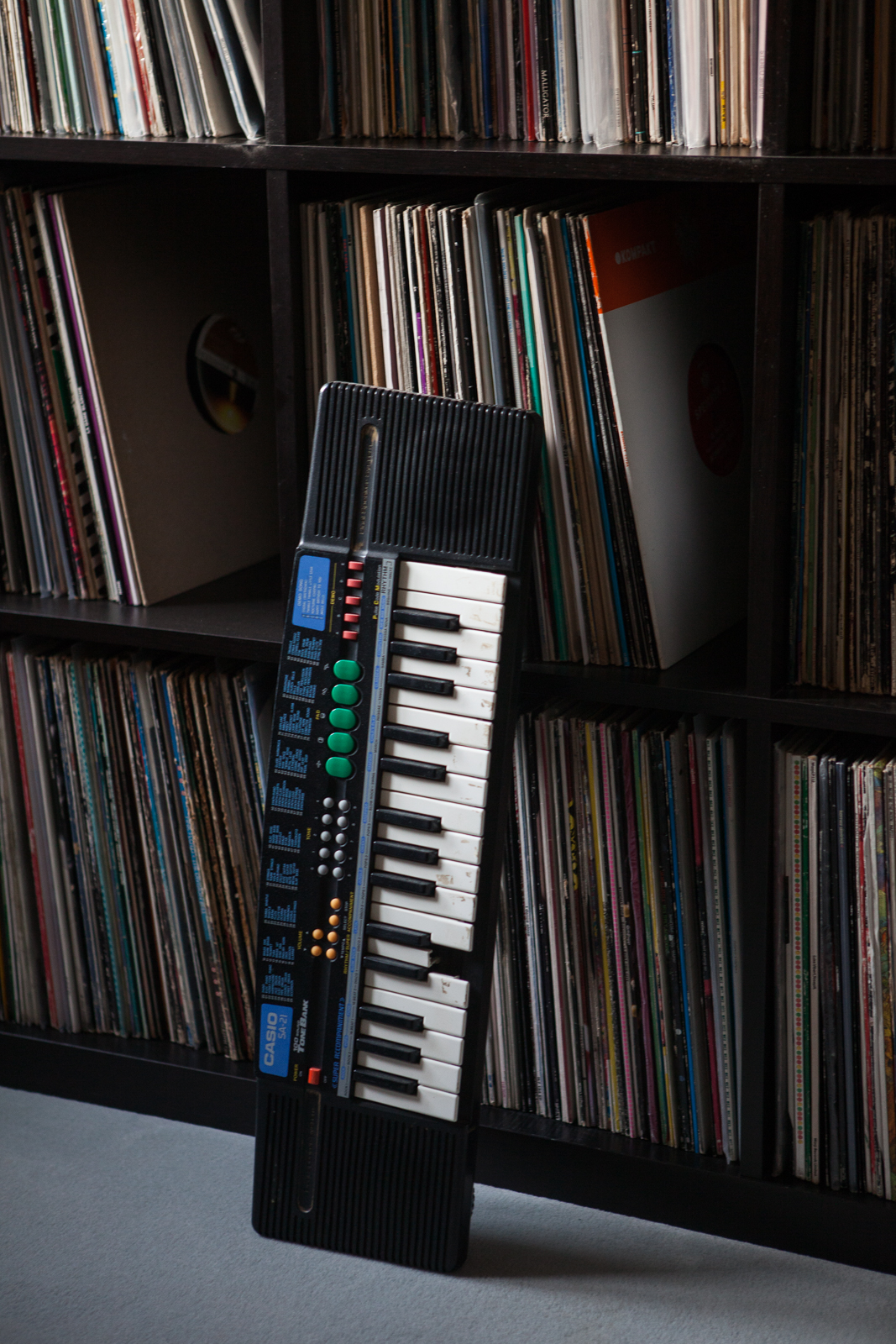
Look for Sounds in Unexpected Places
When I was a teenager, I got a little Casio SA-21 keyboard—see photo above—as a gift from my sister and I remember being quite disappointed. I never played it and just left it in the box. Many years later, my nephews discovered this little toy and had fun with it. A couple of years ago, when I was visiting my parents during the summer, my youngest nephew turned up with it and wanted to do a little jam session with me. I was like: wait a minute, where did this thing come from? I had completely forgotten about it.
It definitely had some signs of use: my cute little nephews obviously hadn’t taken that much care, but once I turned it on I was so blown away and I couldn’t stop playing with it. Pulse-code modulation at its best! Beautiful early ‘90s deep house sounds from a little plastic toy.
I had to steal that keyboard from my nephew and bring it back to my studio in Berlin where I then made a whole new song from it. It’s called “Ukulele Groove” on my Connection Lost EP series, released by Uncanny Valley in 2016.
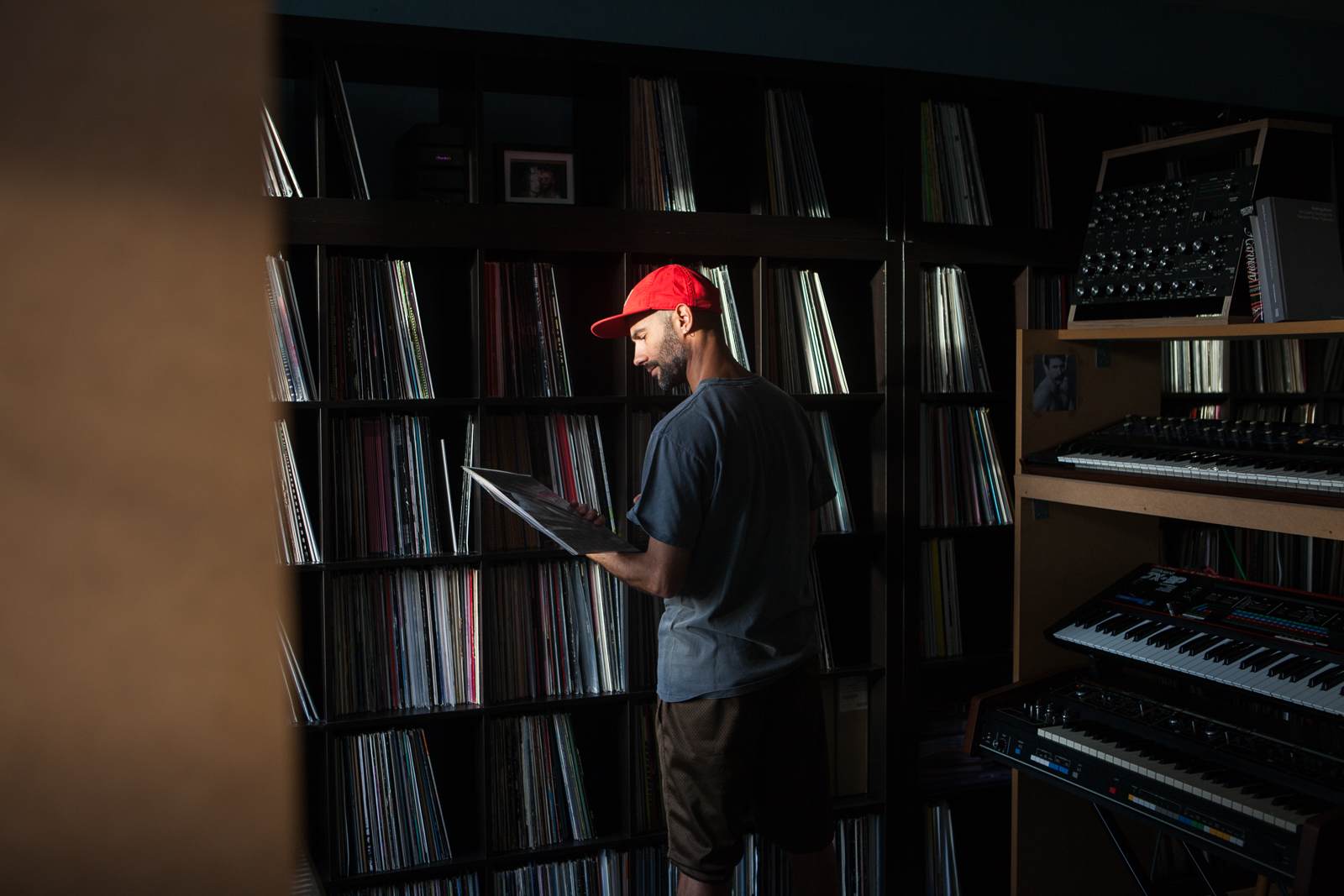
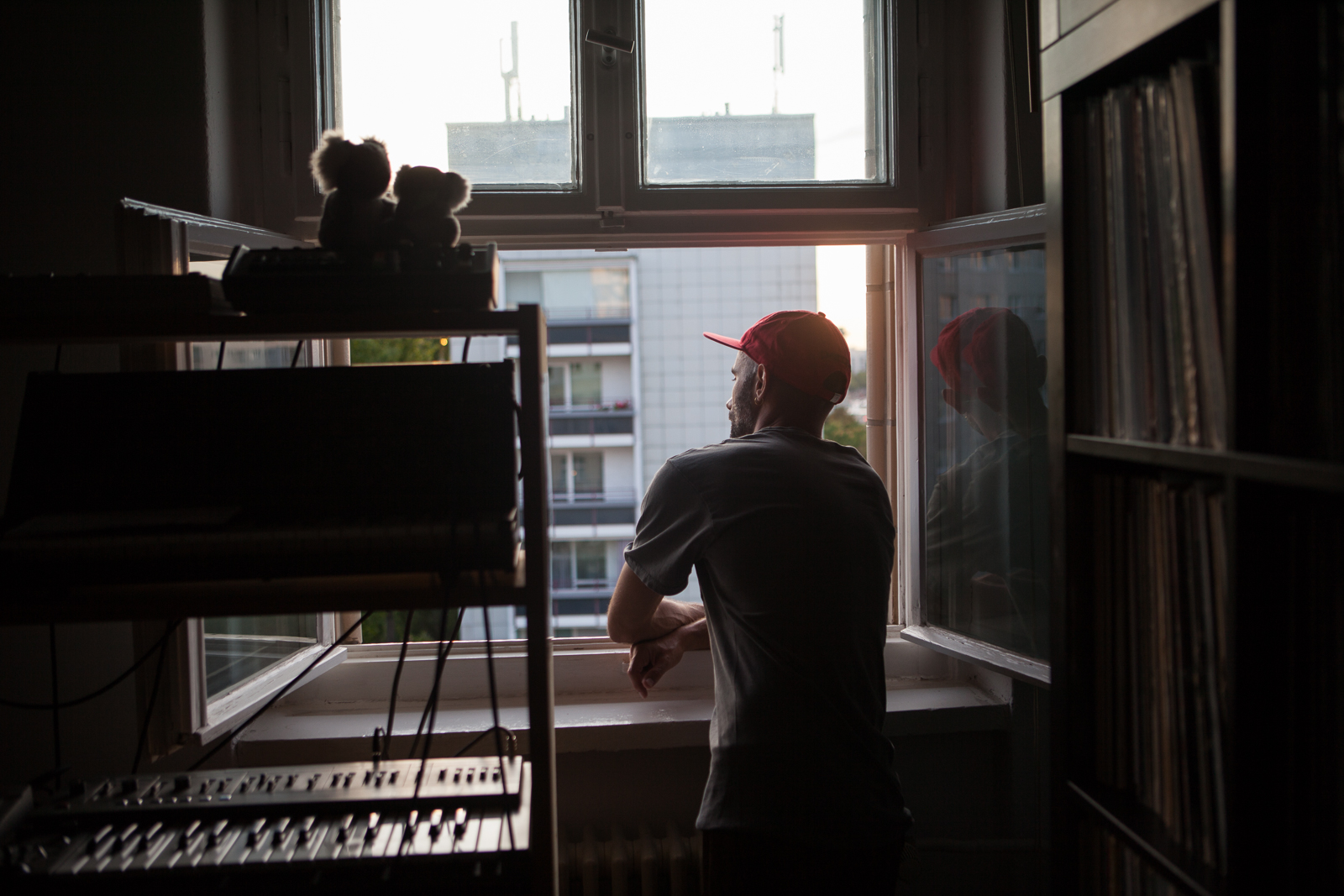
Actively Listen to the Music that Inspires You
It’s so easy to overlook the importance of listening to new music to inspire you. But to really listen to an album or a track, you need to do so very carefully and not skip quickly through it. When I listen to something that I like, I listen to it on repeat and in full length for a few days at least, sometimes weeks or even months.
There is so much music out there and to find the time to listen to everything is impossible. But I feel everyone can find some music which is special for a specific moment or mood. When I find something I like, I like to write down some notes; for example I might try to outline some technical things that I hear, mixing as well as arrangement tricks and details, certain types of sounds that maybe I’ve never made myself. If I don’t know the artist yet, I also like to do some research about them and the label this record came out on. This will spark new ideas for me, and develop me as an artist. I also think that listening carefully to other music is a good exercise prior to making/working on a new track.
Organise your Studio
Another thing that has helped me a lot in the studio, workflow-wise, is to have everything patched and routed. I have a few different mixers and a couple of audio as well as MIDI patchbays and everything is ready to go. I can press play in Ableton Live, and for instance, all my drum machines start running. It is not always super tight but I kind of like that. And if it’s totally off, I don’t mind moving things around in Ableton Live later on anyway.
I feel it is important to have a certain kind of devotion and dedication in the studio. Creating the most comfortable space according to your own needs, it is essential and can affect your performance and creativity. Creativity needs a still mind and this requires organization. Create a new atmosphere for example by changing the lights, or adding some plants or anything that inspires to see new results.
Set Limitations
This year was very interesting because I discovered some new ways of working on music. I relocated for three months to Los Angeles when I was working on my new album, Feel Live, via Live At Robert Johnson. Obviously, I couldn’t take my whole studio with me to LA, where I was staying in a friend’s guest room. My new studio comprised of a nice desk, my laptop with Ableton Live, Ableton Push, a BabyFace Audio Interface, a Dave Smith Tetra, a Waldorf Pulse 2, a Roland VP-3, an Eventide Space Factor. Then in LA I got a MACKIE VLZ-PRO 1604 mixer and a pair of KRK monitors.
At first it was somewhat weird and it definitely took me some time to adjust, but I then appreciated and discovered that working with limitations can actually be very useful. With this same spirit, I set myself the limitation of using only one machine per track. The track “Feel Live” was made entirely with my Roland JX-3P, or in “Properties Of A Distance” I used only my Korg Polysix. This way, I felt I was really getting to know my machines better than ever, as I tried to pull everything out of them.
Also, while in LA, I worked a lot more with Ableton Push. I love making beats with that step sequencer, it really is fun! But I also used it for my external synth devices to play some melodies, bass and chords. I am used to playing keyboards and so normally I need to visualise the black and white keys, in order to know what I am playing. With Push I felt a little disoriented at first, but I eventually came up with some interesting new melodic content which I probably wouldn’t have been able to do otherwise. It felt more creative and the track on the album called “Fare Spazio” is programmed and performed entirely with Ableton Push.
I have also been doing lots of editing, up in the sky, on numerous flights. I used to see other people doing this on the plane and wonder how they could do it. Well, it is totally possible, I actually quite love it now and it’s definitely also a nice way to kill time. Again, the limitation of space and gear has helped me to be focused and get lots of stuff done.
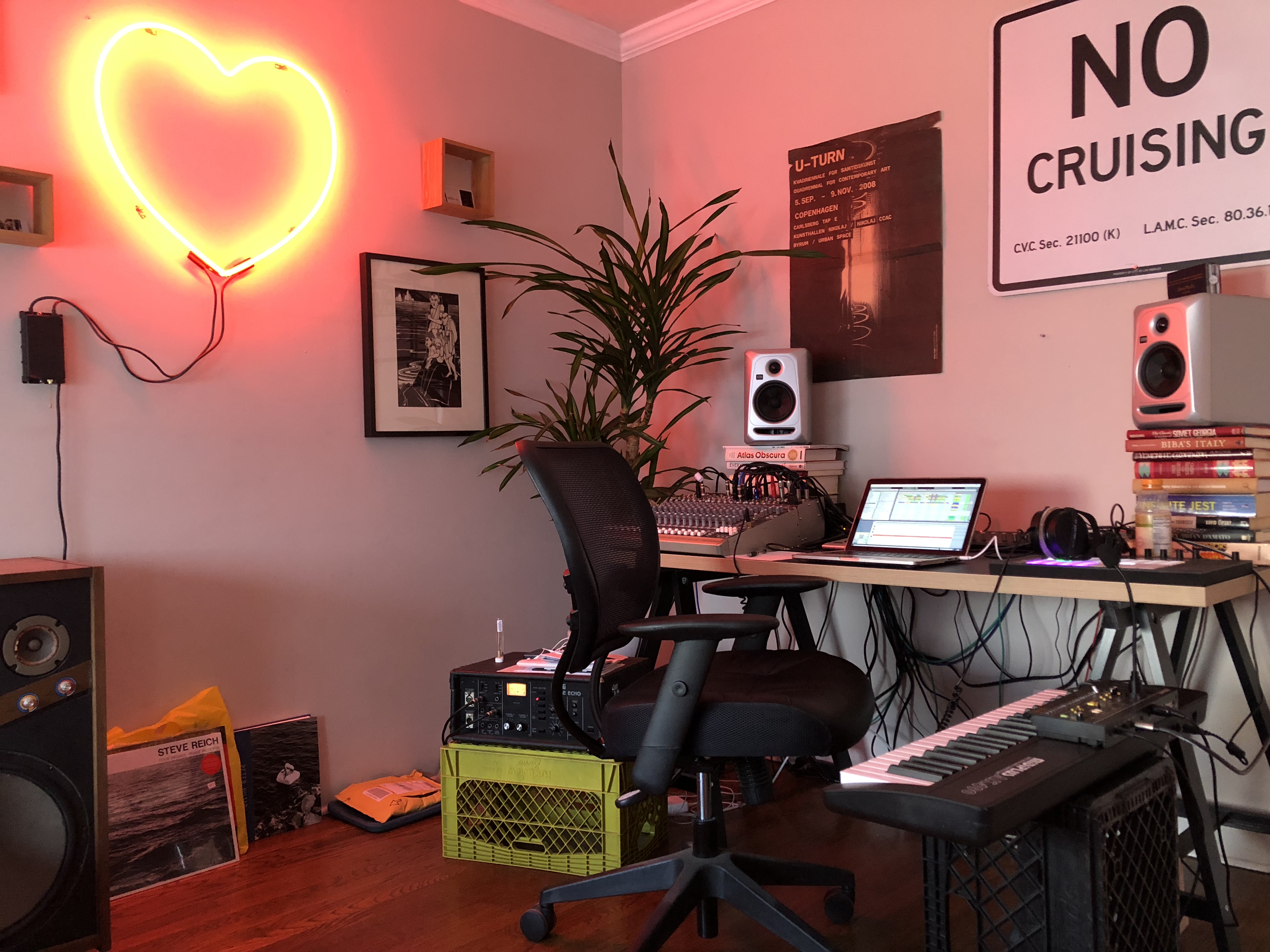
Change your Listening Environment
I think an important thing to do is to check your tunes on as many different sound systems as possible. Sometimes I feel like when I have been working for a long time on a new track, sitting at the same desk, in the same spot, with the same speakers, it kind of gets too “bi-dimensional.” Moving around, changing listening position and set-ups awakens my ears again and I start to notice things that I wasn’t able to hear anymore.
Sometimes I also really like to leave the house and go to the park for a walk, and listen to what I have been working on through my iPhone and write down notes. A new environment can activate and stimulate your attention and concentration again. It is also very important to take some distance from a tune that you have been listening to for too long, to be able to tell if things are still missing or need to be improved.
Photos by Robin Kirchne except Los Angeles studio by Massimiliano Pagliara.
Support Independent Media
Music, in-depth features, artist content (sample packs, project files, mix downloads), news, and art, for only $3.99/month.

